MOBILE, Ala.—Katlyn George was a star of her high school class in Chunchula, Alabama, an honor student with a 4.0 GPA, senior class vice president, and winner of a full academic scholarship to her local community college.
She was considering majoring in education, so in her first year she signed up for a course called “elementary math.” She wasn’t surprised the course was easy; after all, she assumed it was designed to help her teach math to third-graders. The problem is, no one from the college corrected that assumption and steered her elsewhere.
In fact, it wasn’t until George was halfway through the semester that she realized “elementary math” was actually “remedial math”—a developmental course for which she had no need and would receive no credit.
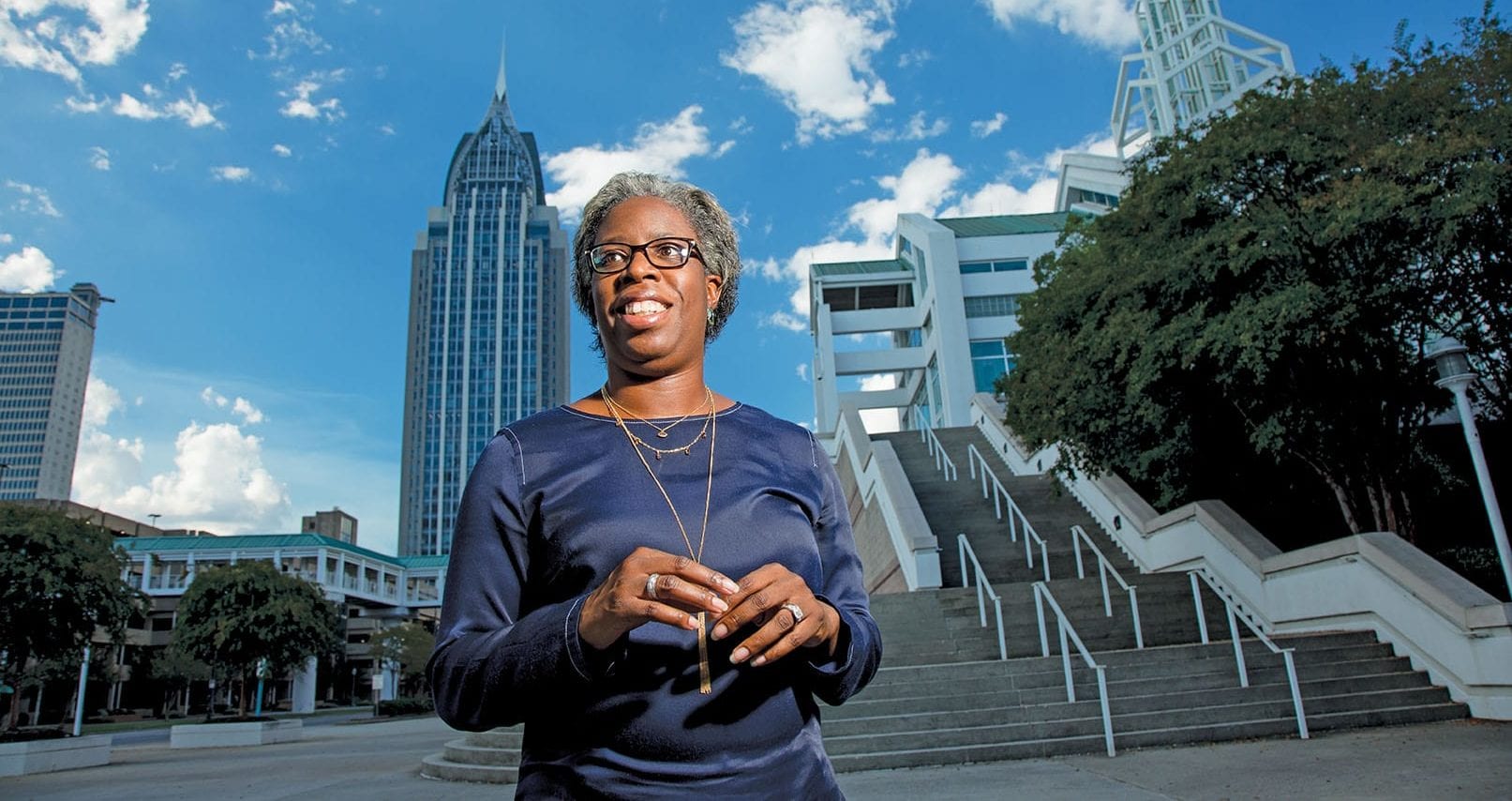
Along the costly path to a degree, such missteps are surprisingly common, particularly among students like George, who was the first in her family to attend college. At best, these missteps can delay progress and increase cost, especially among transfer students. At worst, they can prevent graduation altogether. So, three postsecondary institutions in Mobile—the University of South Alabama, Bishop State Community College, and Coastal Alabama Community College—have launched a cooperative effort to prevent them.
They are three distinctly different institutions. South, as it’s familiarly known, is a four-year research university with 16,700 students on a vast suburban campus. Bishop State is one of the country’s few historically black two-year colleges, struggling to preserve its unique identity. And Coastal Alabama is a consolidation of three far-flung community colleges, each of which the state determined could not survive on its own.
‘The right thing to do’
Traditionally, these colleges had pursued their own goals, competing in the state and region for a steadily diminishing pool of students. But more and more these days, the schools approach student recruitment and student success from a unified perspective. They cooperate and collaborate, says Chandra Scott, director of strategic outcomes for the Mobile Area Education Foundation, “because it’s the right thing to do.”
It’s also, officials agree, the necessary thing to do—a joint response to an urgent call to action. Thriving and diversifying since the Great Recession, this historic port city in the Alabama panhandle offers an abundance of jobs in industries as varied as shipping, aviation, and tourism, along with solid employment in the auto, paper, steel, and chemical industries. Unemployment, though higher than the national average, stands at a record-low 6.2 percent.
Yet in a state that consistently ranks near the bottom in national measures of educational achievement, too many area residents lack the skills needed for jobs that promise advancement and a family-sustaining wage. The site of some of the South’s most gracious historic homes, Mobile is also dotted with shotgun shacks. At 26.7 percent,
the poverty rate is more than double that of the nation. The high school graduation rate has improved recently to 87 percent, but only 27 percent of local residents hold at least a bachelor’s degree. And the picture is even more dire for students of color. As an example, Mobile’s community colleges collectively graduate only one of every four African-American students they enroll.
So Mobile colleges, civic organizations and businesses have accepted a self-imposed mandate to help all area students, of all ages, earn some sort of credential beyond a high school diploma as quickly and affordably as possible.
For businesses, that means working with schools and colleges to design meaningful, skills-based programs of study. For community institutions, it means helping students overcome obstacles to furthering their education. And for colleges, it means simplifying the transfer process and defining clearer and smoother pathways to degrees and certificates. All of these steps are designed to help students move through the system in the expected two or four years with an immediately marketable credential.
At South, that responsibility falls mainly to Transfer Coordinator Robert Charlebois, known across campus as “Pathway Bob.” When Charlebois arrived at South two years ago, a university-commissioned study showed that transfer students were routinely graduating with more credits than their degrees required. In fact, according to Nicole Carr, associate vice president of student academic success, the study showed that, on average, transfer students had amassed 24 more credit hours than students who had started at South.
Excess credits aren’t always a bad thing—a credit hour is meant to be a unit of learning, after all. But for many students, particularly those on financial aid, such credits are a luxury, even a dual danger. One risk is that the aid will run out; the other is that the student will drop out.
So South, in collaboration with Bishop State and Coastal, is working to reduce those excess credits. The colleges are providing more thoughtful and farsighted advising, steering students into clearly articulated pathways that avoid wasteful detours.
Unlike faculty members who must share advising duties with academic responsibilities, Charlebois is a professional advisor who works full time to match students’ interests and goals with schedules and degree requirements. It’s rarely a simple task. In fact, with the course catalogs of three colleges and countless possible majors to consider, Charlebois says: “It can feel like playing 3-D Sudoku.”
Questionable advice
Students look to many different sources for curricular advice, some more reliable than others. In Alabama, there is the Statewide Transfer and Articulation Reporting System, which shows, for instance, when English 101 at a community college is equivalent to English 101 at a four-year institution.
The guide is useful, Charlebois says, but it can be confusing, particularly for students who are the first in their families to attend college. Students also get advice from their friends (euphemistically, “peer advising”), their parents, and faculty advisors with heavy caseloads. Even with all the above, they often make costly mistakes.
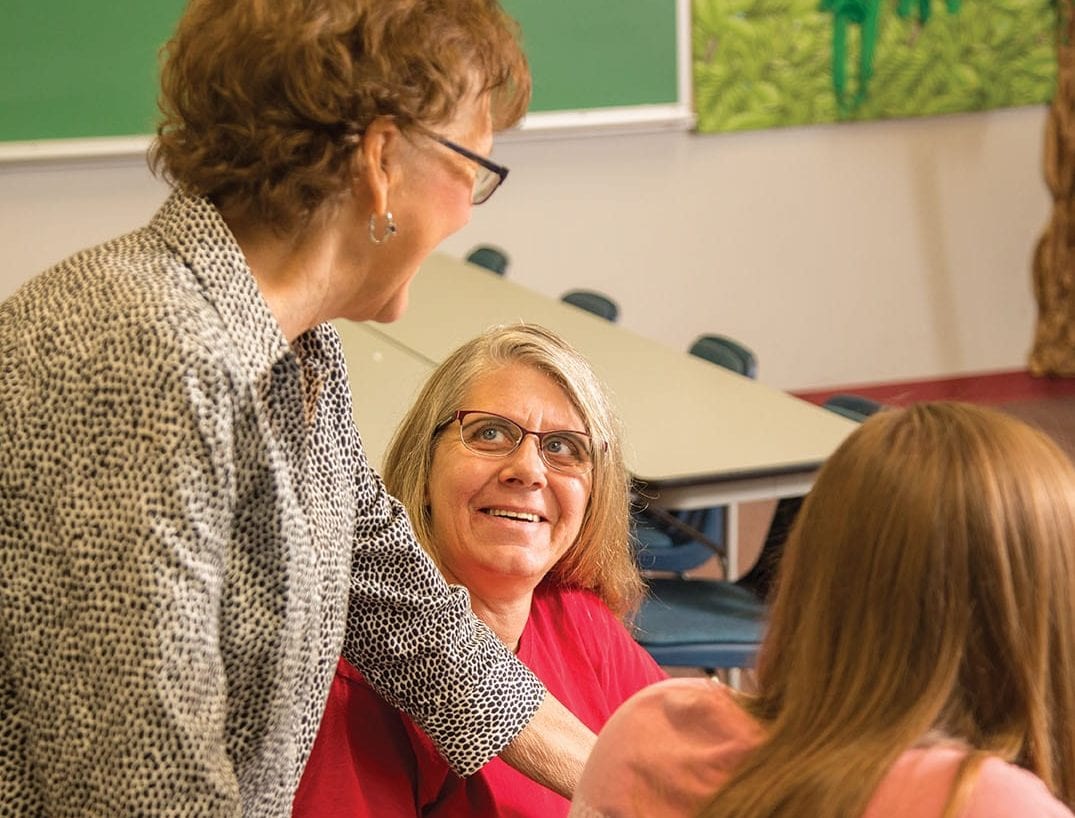
“There can be a small grain of truth in what they learn from other students, and they think they know what they need, but there is often misunderstanding,” Charlebois says. “You can consult all these things and still get it wrong.” A fundamental problem, he says, is that transfer students too often ask the wrong question about their courses. “The question is not: ‘Will it transfer?’ The question is: ‘Will it count?'”
Katlyn George, 20, is now studying business at South, having transferred from Coastal Alabama, where she earned an associate degree in general studies with high honors. Charlebois, she says, “helped me figure out how to transfer.”
Meeting with George at both Coastal and South, Charlebois combed through South’s degree requirements for the business major and quickly realized that George would need three, not two, more years to complete it. So, he recommended she major in psychology with a concentration in business. “That way all my credits would transfer,” George says.
That was a good thing because the “elementary math” debacle at Coastal was not the only uninformed choice that slowed George’s progress. Lacking adequate guidance, she had also taken a course in “finite math” which was far below her level, as well as an American literature class that repeated a requirement she had already met with an American history class.
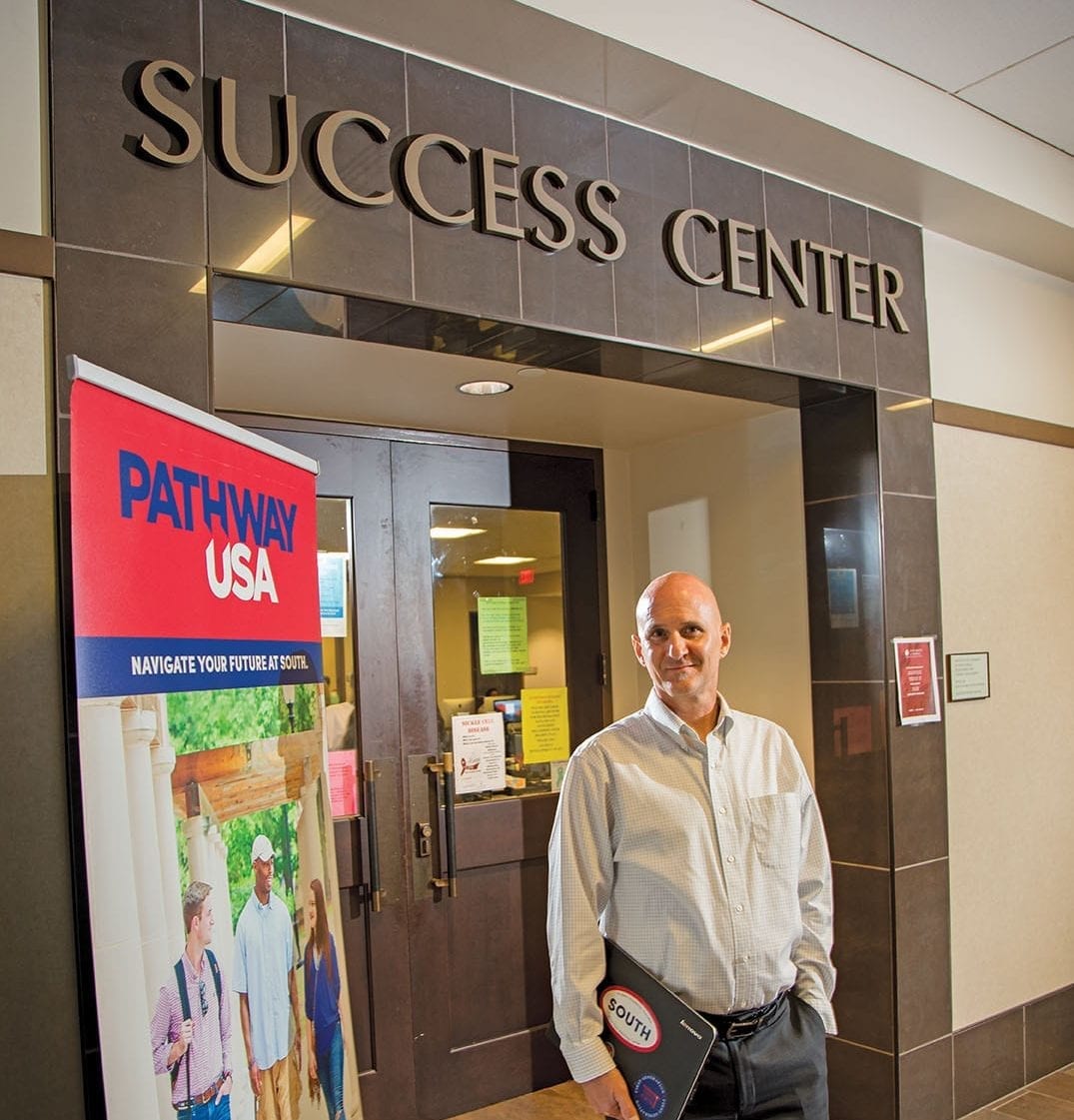
“These classes did nothing for me at all,” George says. As a result of the setbacks, she had to take 19 credit hours one semester—a load so heavy she received her first and only B.
Another beneficiary of the pathways initiative is Tonnia Gray, 53, a former nurse, onetime bartender and current convenience store employee who returned to college hoping for a more secure retirement. After taking classes at for-profit American Intercontinental University and later at Bishop State, she is now a third-year student at South.
Many of the classes she took at American Intercontinental didn’t transfer, so she was essentially forced to start over at Bishop. There, she says, she was taking five math classes—many of which Charlebois later told her were not necessary for her major.
When she transferred to South, she took one math class which, under a reverse-transfer agreement between institutions, earned her an associate degree from Bishop. Now working toward a bachelor’s degree in secondary education and cultural studies, Gray plans to teach middle school or high school. And she praises Charlebois for getting her to this point. “If I hadn’t met Bob,” she says, “I would have been at Bishop State two more years.”
Early registration helps
A huge barrier on the path to graduation is course availability: Students are not always able to take the classes they need when they need them. But thanks to the collaboration between Mobile institutions, transfer students can register early for courses at South.
It’s a significant perk. Typically, transfers are considered first-year students. They’re forced to delay course registration until upperclassmen have made their picks and many classes have closed. Under the new arrangement with Bishop and Coastal, transfer students can register as second- or third-year students, giving them a better shot at the courses they need. “On the day of orientation,
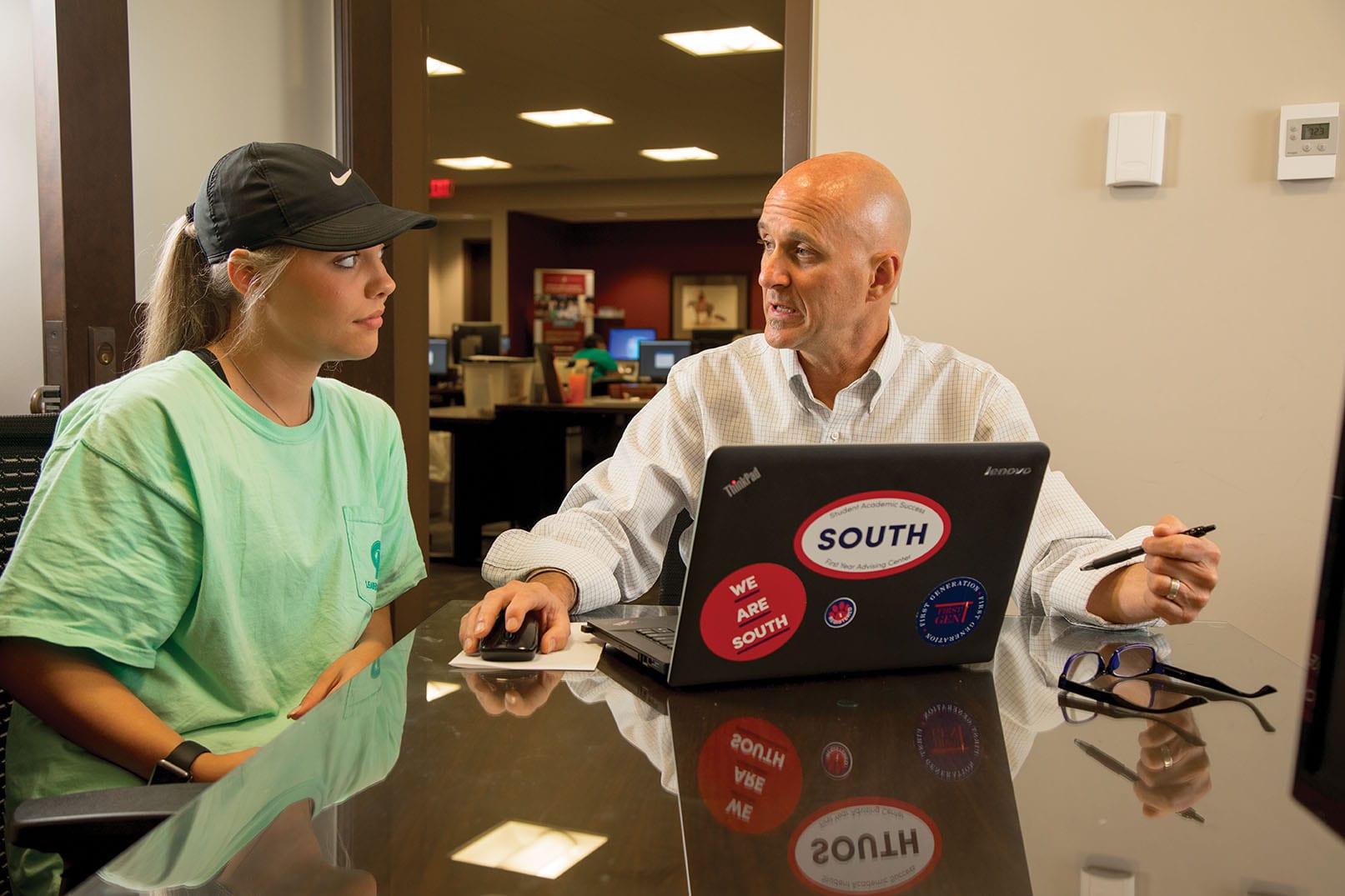
I already had my classes set,” George says.
In another effort to hasten students toward their degrees, the colleges are encouraging them to take on 15 credits per semester, not just the 12 required to keep their financial aid.
“We had been advising students for financial aid purposes,” says Roderick McSwain, director of technical faculty at Bishop State. “As long as they got the money, they didn’t care. But we realized that with 12 hours a semester they weren’t going to finish.”
Understanding that the heavier course load can overburden students with jobs and families, Bishop State is creating summer courses, shared courses and “mini-terms” for gateway courses that qualify under revised financial aid rules.
As with the more robust and better-aligned advising, Bishop State’s “15 to finish” initiative has strengthened the bonds between colleges by essentially codifying what had been informal and unevenly observed agreements.
“Pathways has been a great common thread,” says Chandra Scott of the education foundation. “It’s helped relationships where they had been weak. It used to be an invisible connection. Now they have a real bridge to cross.”
That bridge is also making better connections between education and industry. A key employer in the Mobile collaboration is Outokumpu, a Helsinki-based global manufacturer of stainless steel with a 1,500-employee plant in Calvert, Alabama, that operates around the clock.
The company’s commitment to grooming talent starts in high school—with coveted internships in advanced manufacturing for juniors and seniors—and continues through cooperative programs with Coastal Alabama and Bishop State. Skyla Cardwell, 18, a first-year student at Bishop State, has a taken advantage of both opportunities.
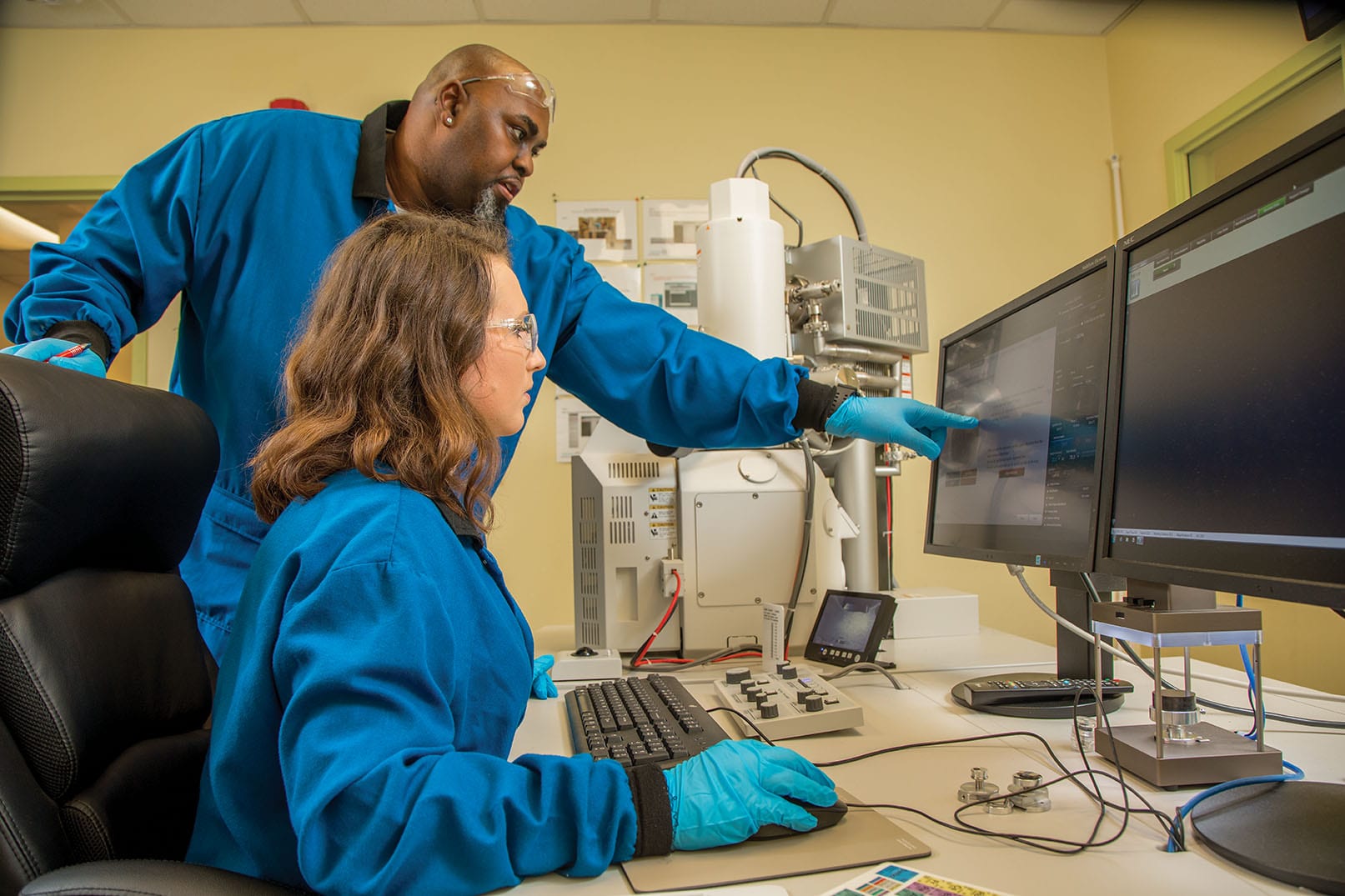
Starting as an intern at Outokumpu as a high school senior, she worked as a laboratory technician, learning the science of metallurgy and the particulars of purchasing, warehouse organization, data collection, and quality control.
At the same time, while studying business at Citronelle High School, she was honing her skills with Excel, Power Point and Word. A mentor helped Cardwell combine those skills and use them to create data-rich presentations for employees and fellow students.
‘Really eye-opening’
“It’s been really eye-opening,” she says. Cardwell is now pursuing an associate degree in a work-study program at Bishop State and plans to continue until she earns her bachelor’s—even though Outokumpu has already offered her a full-time job.
“I really hadn’t thought about going into manufacturing until I came here,” she says.
That change of heart comes as no surprise to David Scheid, Outokumpu’s North American vice president for human resources. Through its internships, he says, the firm is showing students that there’s more to manufacturing than they ever realized.
General operations, safety, the role of various administrators—”students really don’t know until they see it in person,” Scheid insists. He also says it’s essential to work with high schools and colleges on curriculum to ensure that degree and certificate holders leave with the skills and knowledge that employers need—most notably, math skills.
For years, technical education has suffered from negative stereotyping, Scheid says. “As a parent myself, I’m saying: ‘You gotta go to college,'” he admits. “But the intention is to prepare future workers for well-paying jobs in manufacturing, and not all of those jobs require a four-year degree. We’re saying, ‘Let’s show them what’s out there.’ You can be 18 years old and get an entry-level job that pays $55,000 to $60,000 a year.”
Indeed, Skyla Cardwell’s experience proves his point.
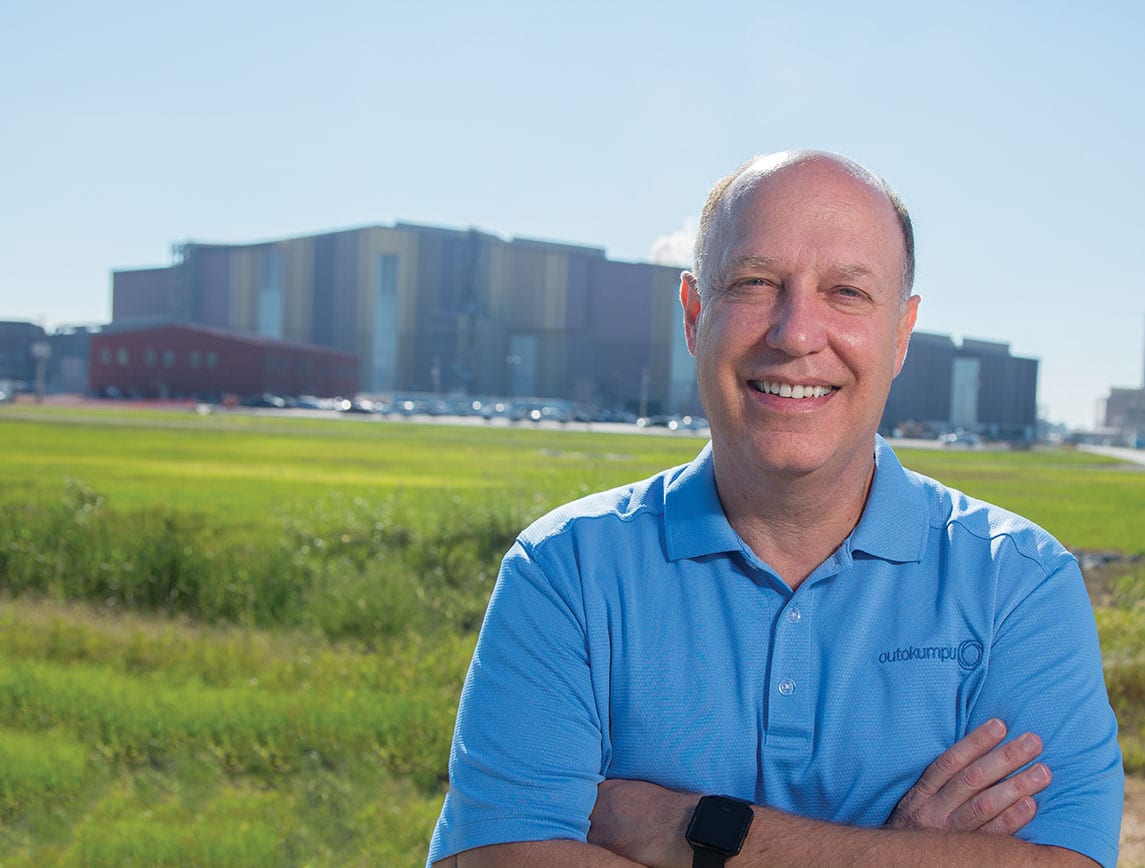
Despite the generous pay, Outokumpu and other local industries still have difficulty finding skilled workers such as electricians and mechanical maintenance technicians. So, the company has been developing a cooperative certificate program with Bishop State.
In that program, each student is assigned a mentor, and all spend about 70 percent of their first year in a traditional classroom—either at the mill or at the college—and the entire second year at the plant, learning the business hands-on. All earned credits also apply to an associate degree.
“With the demand for employees so high, and the supply still too low, we have to step up,” Scheid says.
He’s speaking for his company, of course—but his words apply just as well to Mobile’s entire business, civic and education community.
